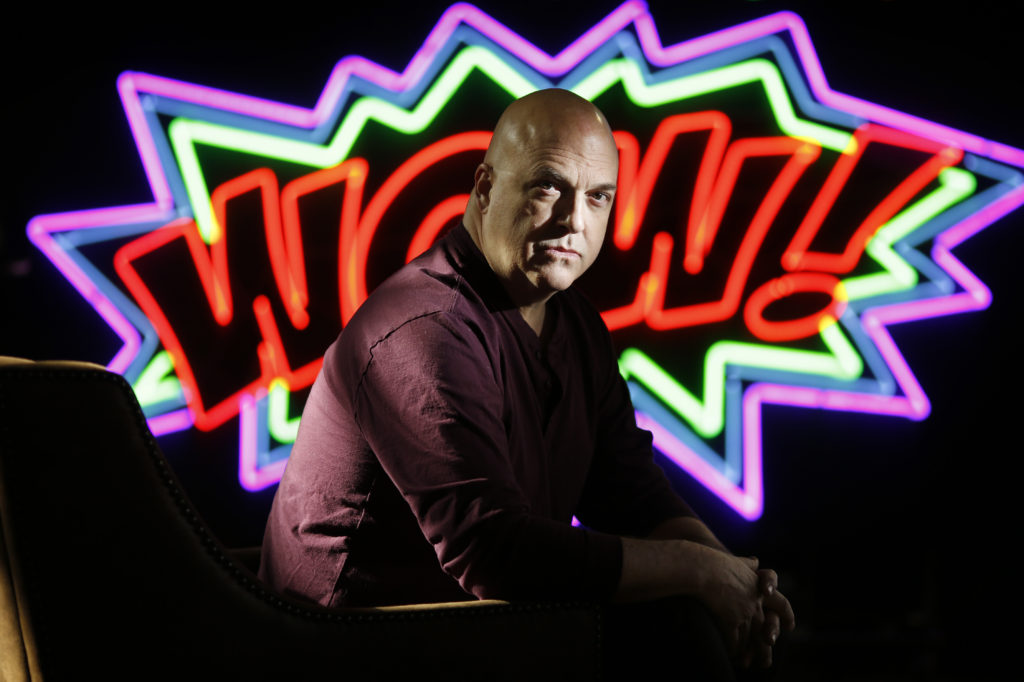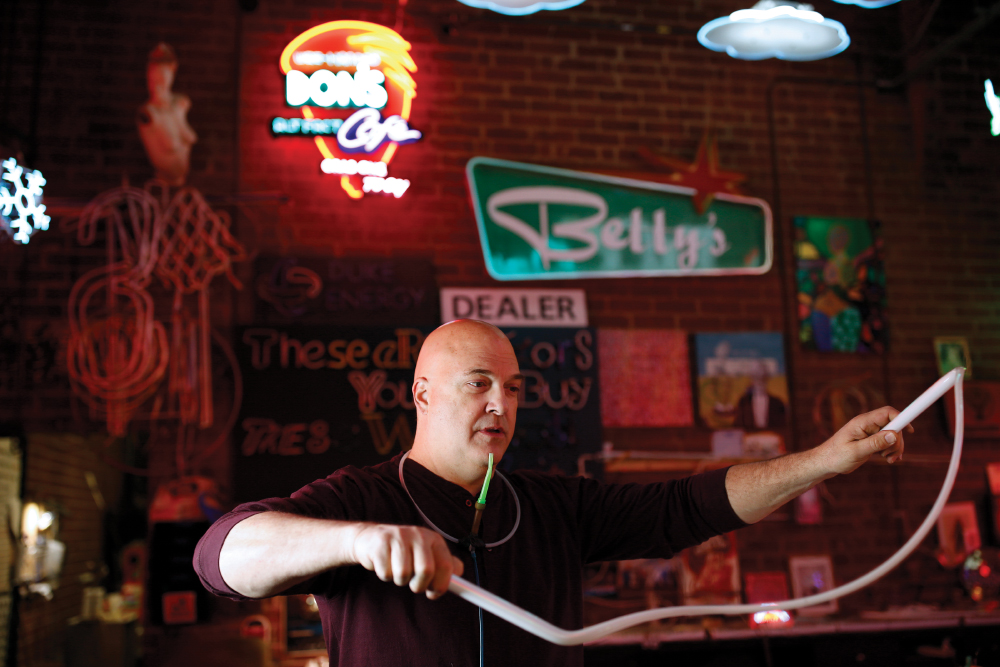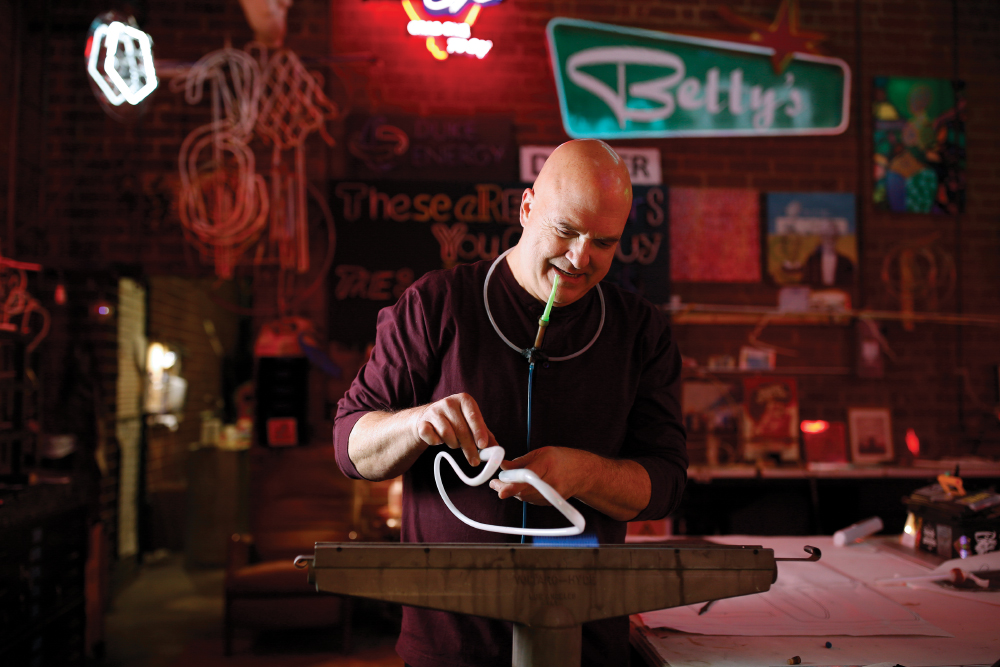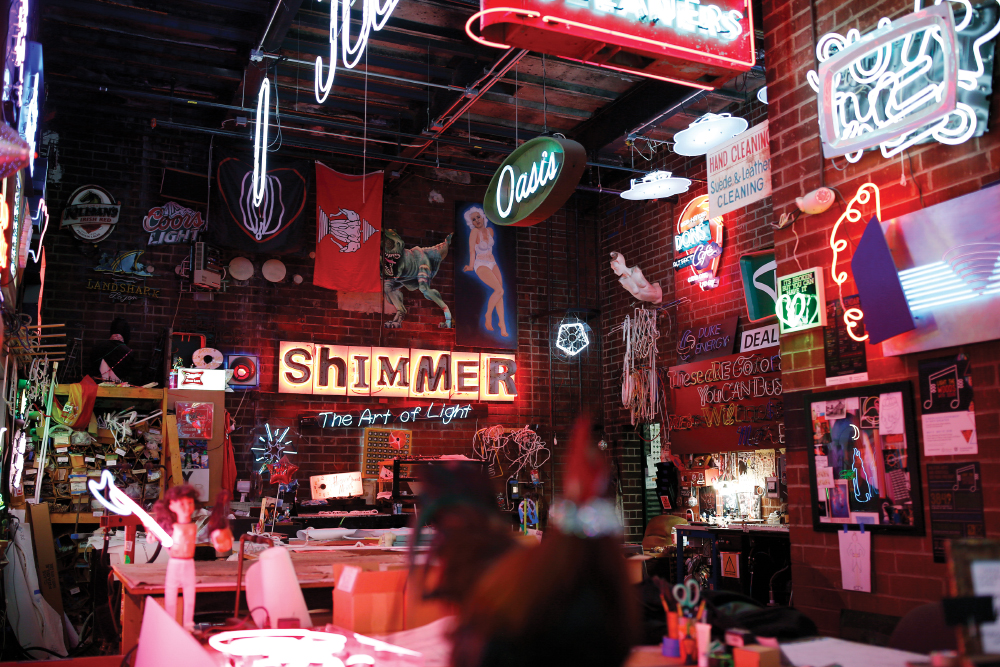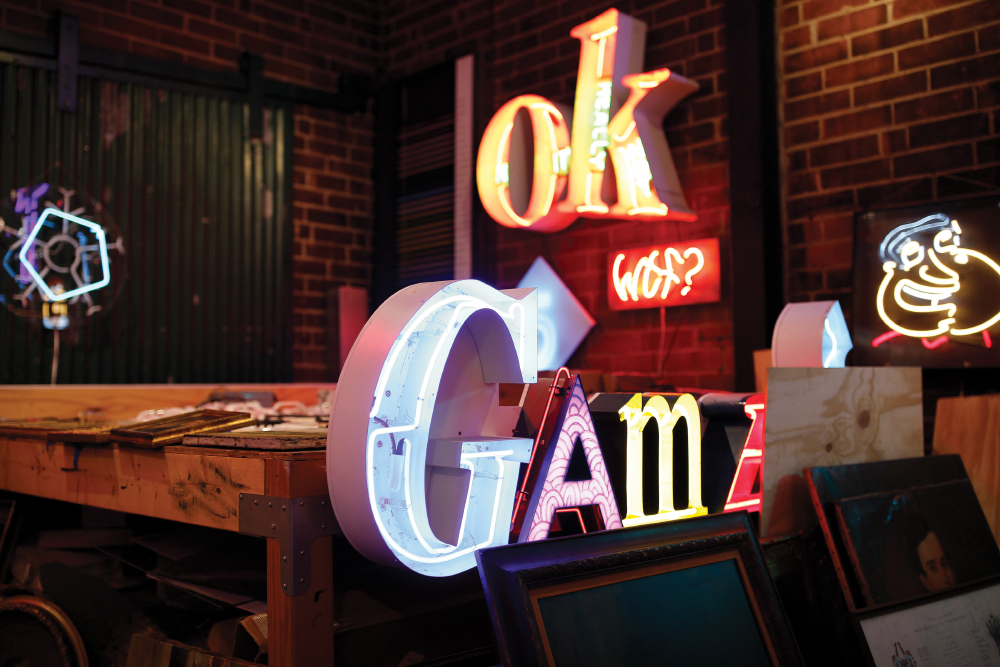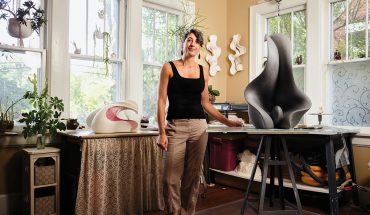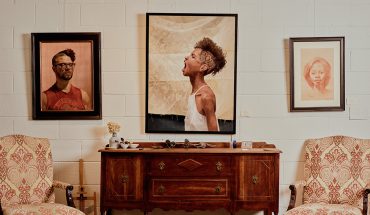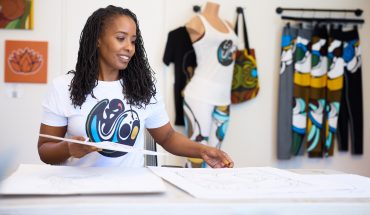The founder of GLAS Studio in Raleigh has a background in sculpture and glassblowing, and is mentoring the next generation of neon artists.
by Colony Little | photography by Eamon Queeney
“I think we are hard-wired to be drawn to light,” says Nate Sheaffer. “Neon is a brilliant and uplifting visual.” He should know: he’s a longtime neon artist and glass bender who’s perfected his craft for over 36 years in North Carolina. If you see a glowing sign luring your gaze toward a storefront in Raleigh, chances are it was created in his studio, Glas Neon. From the bright red “Raleigh” sign inside Union Station to the triptych of positivity prompts (What Good Shall I Do Today?) at CAM Raleigh to the shiny new green sign in the window of Parkside Grill, Sheaffer and his Glas team have made public art their business. “As a shop of craftspeople, we get to imbue some artistic leverage into the commercial signs we make,” he says.
The Glas Neon studio at Dock 1053 on Whitaker Road — which calls itself “a shiny place for shady people” — is a dazzling wonderland filled with whimsical vintage signs, glimmering disco balls, campy cartoon characters, magical marquees, and bespoke custom commissions infused with artistry and whimsy. A portion of the studio is open to visitors who can observe the process in action through a window — a safe way to get a glimpse of the artists at their workbenches, bending glass with torches.
Working in neon combines art and science to create lightning in a bottle. The process begins with a design drawn to scale on paper and used as a pattern for “bending” a glass tube. While heating the tube over a high flame, the artist maintains a consistent diameter by blowing puffs of air into the glass. Once the desired shape is achieved, the bending is complete. The Glas Neon team uses various colors of glass, and some tubes are coated with phosphor or other chemicals to generate different hues.
Next, gas is introduced into the glass tube — neon, historically, but other inert gases, too, like argon, helium, or mercury, or a mix that will glow when activated. The gas is sealed inside the tubes, which have electrodes attached to each end. When power is sent to the electrodes, it ionizes the gas inside the tube and activates the light. The combination of the tube color, phosphor lining, and gas used influences the color of the finished product. It’s a delicate, technical process, with brilliant results. Sheaffer relishes neon’s ability to spark curiosity and wonder: “I really want everybody who looks at something that I’ve had a hand in the design to say, How did he do that? and then to immediately ask, Why?”
Sheaffer attended the University of North Carolina at Chapel Hill in the early 1980s, earning a degree in German while also studying art and sculpture. As a student, Sheaffer was encouraged to incorporate light into his studio practice. That led to an independent study under neon artist John Noe, which then led to work with John Wilhelm, who was then the owner of Paradise Neon in Raleigh. Wilhelm tutored Sheaffer in neon art and mentored him on the business side of neon-tubing fabrication. After Sheaffer graduated, Wilhelm (who had recently sold his own business) encouraged his protégé to start his own shop. In 1986, Sheaffer opened Neon Impressions in Chapel Hill, fabricating glass tubing for commercial businesses with his brothers Curtis and Garth as partners and employees.
While commercial signage work paid the bills during Neon Impressions’ early years, Sheaffer realized that in order to push the business into a more artistic direction, he would need stronger glass-blowing skills. “I felt like I needed to have a grip on the craft to adequately start being more quirky on projects,” he says. “I accelerated the process by working 16-hour days, by myself, practicing for two years.”
By the late 1990s, neon glass operations in the U.S. faced stiff competition from global fabricators and technological advances in LED lighting. Neon Impressions shut down as the industry suffered tremendous losses. “Over 2,000 neon glass blowers pretty much stopped working, period, in 1999,” says Sheaffer. “And that was out of a pool of about 3,500. Only about 350 exist now.” Sheaffer himself stepped away from the business for a while, first working in general contracting, then staying at home to parent his two young children. But as they got older, the lure of the light returned. He joined the Chatham Artists Guild in 2011 to start rehoning his craft, then founded Glas Neon in 2016; he now employs five people at the Raleigh studio.
When Sheaffer opened Glas, the lingering effects of global competition and technical advances remained. Still, the studio was doing well — until a 2020 expansion to a second studio in New Orleans, coupled with the pandemic, put the business in a precarious position. By last year, it was almost lights out for Glas. Sheaffer realized that if he let his staff go, the chances of them returning were slim. So he took a significant financial gamble to keep his staff employed by borrowing from his retirement savings. “If I lost my glass blowers, I wouldn’t get them back — they would go find someplace else and I wouldn’t blame them,” he says. “We did a lot of ‘make work’ restoring old signs. I paid everybody by borrowing from future Nate, who will not return my calls at all [laughs]. My sad story would be less sad if it weren’t everybody’s story.”
But a holiday miracle pulled Glas Neon out of the dark: last December, WRAL and Dorothea Dix Park commissioned Glas to create neon sculptures for the second annual Nights of Lights drive-through light show. The project was the boost the team needed. The Glas team created over 35 large-scale works for the festival, including a series of neon elves and a 23-foot mechanical Santa Claus.
In addition to its commercial work, the studio has had a hand in artistic commissions like the Love Over Rules installation at Father & Son Antiques. Marjorie Hodges from Artsuite commissioned Glas to fabricate and install work originally designed by artist Hank Willis Thomas. “That was such a timely thing to happen for everyone,” says Sheaffer. “It was a technical challenge, the whole crew worked together as a shop effort — it was really gratifying and the message is so good.” This was the second large-scale commission for which Hodges had hired Sheaffer, the first being a piece called Eyecentennial in the North Hills ArtBox public art project. “Nate is so talented, he really stretches the bounds of using neon to create complex, colorful, and engaging works of art,” says Hodges.
The craftspeople at Glas are also encouraged to hone their own creative practices. Tayler Drattlo, a neon artist who’s worked at the Glas studio for two years, reflects on how color in neon plays with our perception. “As I have explored and experimented in my neon practice, I’ve noticed my tendency toward the neon glow itself and its participation in space,” she says. “The delicate art of bending soft glass mixed with the endless possibilities of gas to glass color combinations draws me in. I’ll need at least one more lifetime to explore all the possibilities of the shape and flow of the visual candy that is neon.”
That creativity speaks to the environment of collaboration and mentorship at Glas, which, in addition to nurturing the folks in its studio, holds glass-bending classes to preserve the distinctive craft. “He’s the hardest-working person I’ve ever met and has always been open to sharing his experience and knowledge with others,” says Richard Marvill, a glass bender at Glas Neon who has known Sheaffer since they were students together at UNC. “He’s also an energetic champion of what we do — he definitely inspires those around him to give a little more.”
Sheaffer recognizes that part of the lure of neon is nostalgia, but believes that, with creativity and craft, it can play a crucial role in shaping the visual landscape of an evolving Raleigh.
“I’d like to think that when we do something right, that has a decent design, the light alone will draw people,” says Sheaffer. “And if it’s clever, then maybe it will make somebody smile.”
__
This article originally appeared in the March 2022 issue of WALTER magazine

